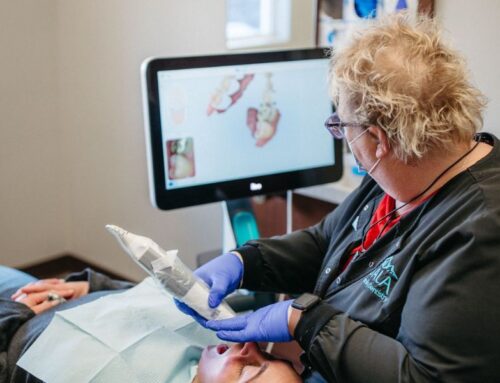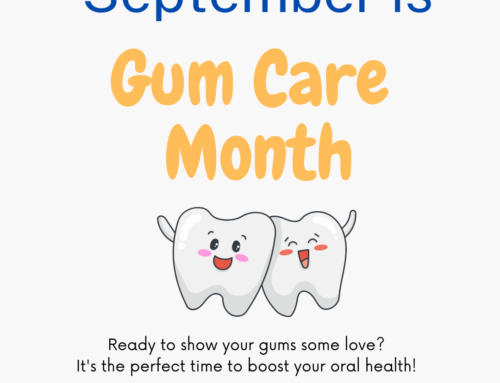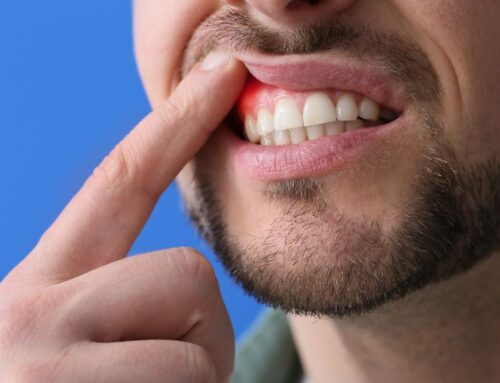
At Sala Family Dentistry we perform oral cancer screenings at every visit with your hygienist to detect oral cancers before they have a chance to spread. We screen for oral cancers by conducting a thorough visual exam of the oral cavity and pharynx followed by palpating the lymph nodes on the head and neck. These simple screenings only take 5 minutes and can save a life!
Tobacco and alcohol users are at the highest risk for developing oral cancers, however, it can affect anyone. There are a few measures you can take to reduce your risk factors for developing oral and pharyngeal cancers:
- Make sure you’re seeing your dental hygienist at least every 6 months.
- Avoid tobacco use (this includes vaping, dipping, and marijuana use).
- Limit alcohol consumption.
- Avoid mouth rinse with alcohol – we recommend Closys.
- Avoid excessive sun exposure to the lips and wear lip product that contains SPF.
Facts about oral cancer:
- According to the American Dental Association (ADA), oral cavity and oropharyngeal cancers account for 2.8% of all cancers diagnosed in the U.S. and 1.8% of all cancer deaths
- The 5-year survival rate for those with localized disease is 85%, compared with only 40% in patients whose cancer has metastasized or spread to other locations.
- Major risk factors for oral cancer include tobacco use and alcohol consumption. Those who actively use both tobacco and alcohol in conjunction are at an even higher risk, however, individuals who do not consume alcohol or tobacco products may still develop oral and oropharyngeal cancers.
- Human papillomavirus (HPV) infection is a major risk factor for oropharyngeal cancer and is also a risk factor for a small percentage of cancers at other areas of the head and neck.
- Signs and symptoms of oral cancer may include leukoplakia (white patches) and erythroplakia (red patches) on the inside of the mouth.
- Other possible signs and symptoms of head and neck cancers that patients may report include:
- a lump or thickening in the oral soft tissues
- soreness or a feeling that something is caught in the throat
- difficulty chewing or swallowing
- ear pain
- difficulty moving the jaw or tongue
- hoarseness
- numbness of the tongue or other areas of the mouth
- swelling of the jaw that causes dentures to fit poorly or become uncomfortable
Here are 7 steps to self-screen at home in under 5 minutes.
- Examine yourself in the mirror with a bright light. Check for unusual swelling, lumps and bumps.
- Pay attention to your skin and note any changes in the color or size of sores, moles or other growths.
- Press your fingers along the sides and front of your neck. Do you feel any tenderness or swelling?
- Pull your lower lip out and look for sores. Use your thumb and forefinger to feel the upper and lower lips for lumps or texture changes.
- Examine the insides of your cheeks for red, white or dark patches. Gently squeeze and roll each cheek between your index finger and thumb to check for bumps and tenderness.
- Tilt your head back to check the roof of your mouth. Run your finger along the surface. Do you feel or see any unusual lumps or discoloration
- Check out each side of your tongue. Look at the top, bottom, left and right sides of your tongue—including the soft tissue under it. Once again, check for swelling, discoloration or unusual lumps.
If you see or feel any suspicious areas contact your dentist.
Contact
Phone | (775) 376-7914
Email | info@salafamilydentistry.com
Hours
| Mon - Fri | 7:00am – 5:00pm |
| Saturday | 7:00am - 3:00pm |
| Sunday | Closed |
Location





